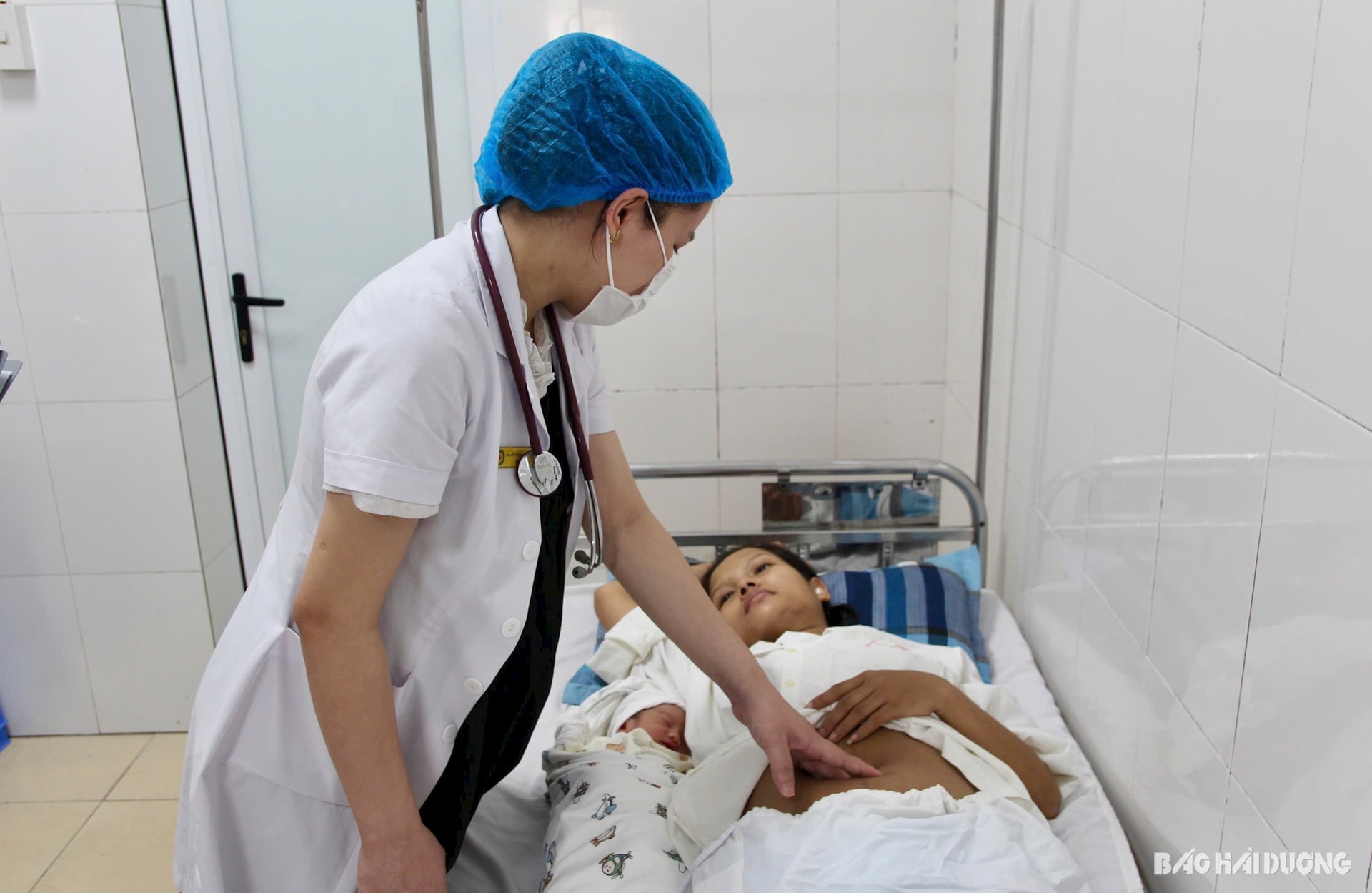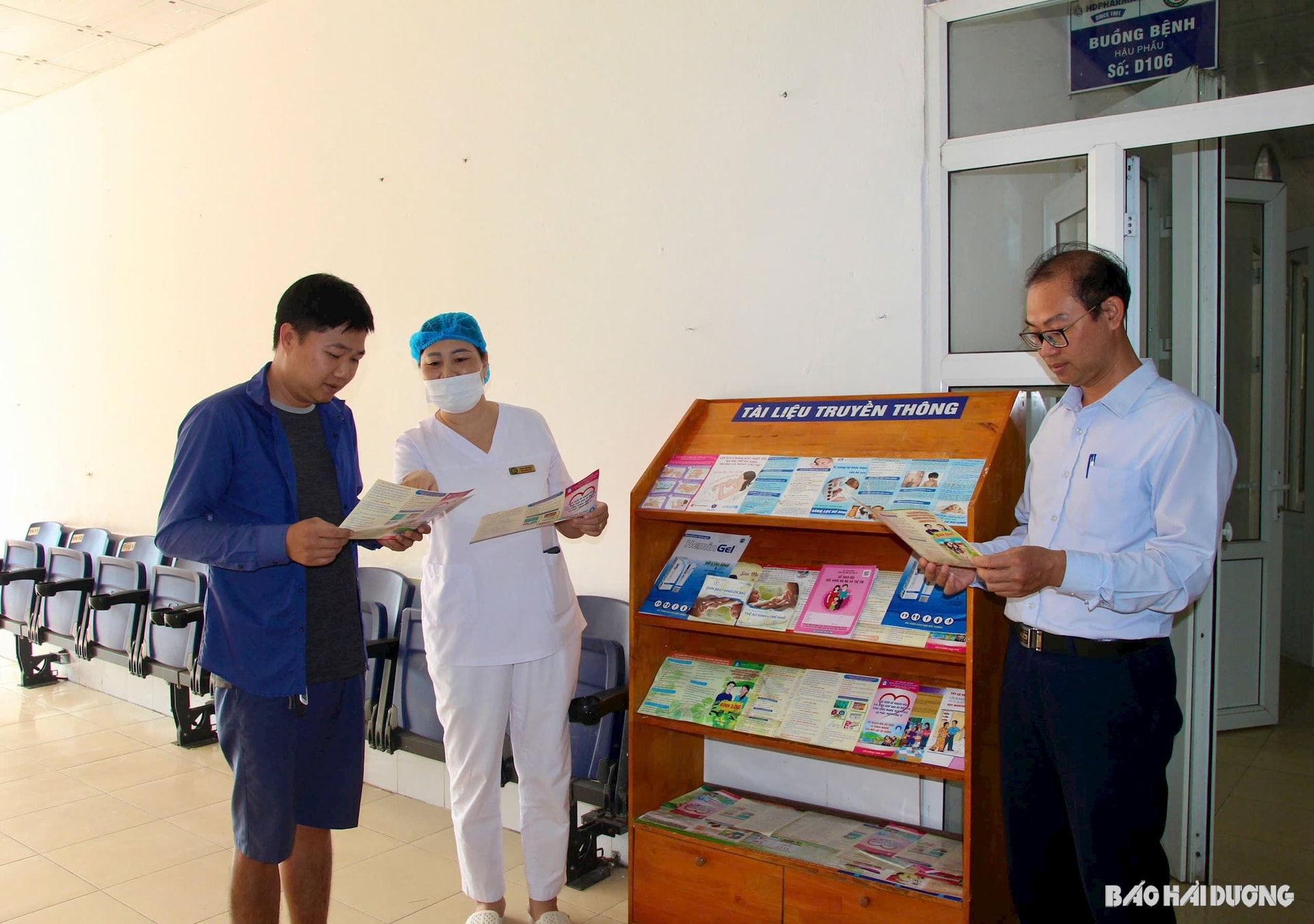In recent times, with many specific and focused solutions, Ninh Giang district (Hai Duong) has made efforts to control gender balance at birth to contribute to gender equality and improve population quality.

Deep from the base
Ung Hoe commune has the second largest population in Ninh Giang district because it merged from three old localities: Ninh Hoa, Quyet Thang, Ung Hoe. The commune used to be a "hot spot" for gender imbalance at birth. However, recently, thanks to good advocacy and propaganda work, the locality has gradually controlled the gender ratio at birth. In the first 10 months of 2024, the commune's gender ratio at birth was 97 boys/100 girls. The third child birth rate decreased by 1.1% compared to the same period last year.
According to Ms. Do Thi Minh, in charge of population at Ung Hoe Commune Health Station, each year the locality has about 180-200 babies born. The sex ratio at birth is at 114-115 boys/100 girls, but compared to the normal biological level, this number is still high. Therefore, the locality identifies controlling the sex ratio at birth as a key, core task to ensure population stability. In addition to regular propaganda activities, the Health Station also integrates population and gender equality issues into the programs of organizations, clubs for the elderly, mothers-in-law, daughters-in-law, and girls.

Although Tan Quang commune has a large population, it only has 1 official in charge and 12 collaborators in 9 villages. However, the investigation and review of the sex ratio at birth in the commune is very timely and close. Not only monthly and quarterly, the Health Station also collects information on the birth situation every week to evaluate and propose appropriate population development orientations. Ms. Le Thi Thuy My, an official in charge of population work in Tan Quang commune, said: "In addition to advocacy and propaganda, the Health Station considers the population census an effective tool. From accurate data, reasonable adjustments will be made."
In October 2024, Tan Quang commune had 100 children born, including 49 boys and 51 girls. This is an effort to achieve gender balance in the locality towards stable and sustainable population development.
Strengthen propaganda
Previously, Ninh Giang district was one of the most gender-imbalanced localities in the province. The district recorded its highest sex ratio at birth in 2008, with 127 boys per 100 girls. Faced with this reality, the district developed a plan to control the sex imbalance at birth.
The management and advisory agency of Ninh Giang district determined that the gender imbalance at birth has many causes, but the root of the problem comes from the ideology of "preferring boys and despising girls", choosing the gender of the fetus based on gender stereotypes. Changing people's attitudes and views does not happen overnight. The downside of the development of medical technology makes it easier to intervene and choose the gender of the fetus. In addition, the mentality of wanting many children in conditions of economic abundance is also a barrier to ensuring gender balance at birth.
Mr. Nguyen Ton Manh, Head of the Department of Population, Education and Health (District Health Center) said that based on the analysis of the causes of gender imbalance at birth, the district focuses on communication work, diversifying both content and form. The information and propaganda are close, vivid, and suitable for each target group such as people of childbearing age, youth, minors, the elderly, etc. With the motto "slow and steady wins the race", agencies, units, and localities persistently apply this measure to change people's awareness.

In addition to promoting propaganda, Ninh Giang district also regularly organizes programs to select, set examples, and commend exemplary families in implementing population policies. The district's 132 population collaborators are always active in collecting information and data on the sex ratio at birth. In particular, there is a comparison with the police and judicial agencies to ensure there are no errors. From the monthly assessment results, the advisory agency will propose solutions and plans to control the sex imbalance at birth. Thanks to that, the district's sex ratio at birth has gradually decreased every year.
The district's sex ratio at birth has been higher than the average of the province, the Red River Delta and the whole country since 2020, and has achieved good results. In the period 2020-2023, the sex ratio at birth in Ninh Giang remained at 111-112 boys/100 girls, lower than the ratio of the province, the region and the whole country. It is expected that in the first 11 months of 2024, the sex ratio at birth in Ninh Giang will be 115 boys/100 girls. By the end of 2024, the ratio will be at 111.5 boys/100 girls, lower than the ratio of the whole province. The district aims to have a sex ratio at birth of 110 boys/100 girls by 2025.
The efforts to bring the sex ratio at birth back to its natural balance in Ninh Giang district have recently achieved some positive results. However, assessing the control of sex at birth is a phase and a process. Therefore, the district needs to continue to have long-term solutions to ensure gender balance at birth.
PV